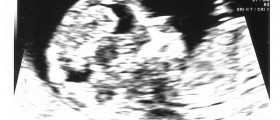
Tubal ligations have been shown to be 99 percent effective at preventing pregnancy in the first year following the operation. This means that getting your tubes tied has a higher pregnancy prevention rate than most other birth control methods. Why do we mention the first year specifically? Because the fallopian tubes do, in some cases, reconnect themselves with time.
Though this is rare, and the risk would vary according to the exact surgical method used, it is something to watch out for. Women who get pregnant despite a tubal ligation have a 15 to 20 percent chance of experiencing an ectopic pregnancy. Ectopic pregnancies develop outside of the uterus, and most commonly in the fallopian tubes. Such pregnancies cannot be carried to term, and unless a natural miscarriage or removal of the fetus occurs, tubal pregnancies can become life-threatening extremely soon.
Ectopic pregnancy after tubal ligation can be caused by fallopian tubes that reconnected just slightly; not allowing enough space for the fertilized egg to reach the uterus. According to one study, 84 percent of all tubal ligation "failures", meaning a pregnancy occurred anyway, happen after one year of having the operation carried out. The trouble is that there is no easy way to determine whether this has happened, and in most cases the earliest sign that fallopian tubes have reattached themselves is pregnancy.
















Your thoughts on this
Loading...